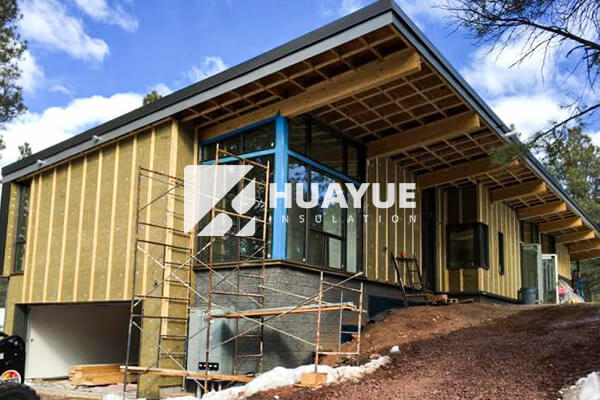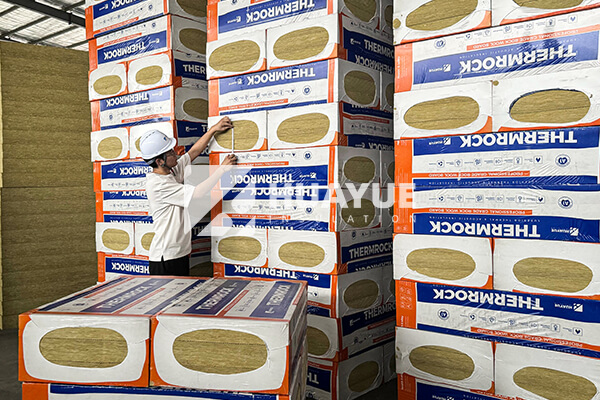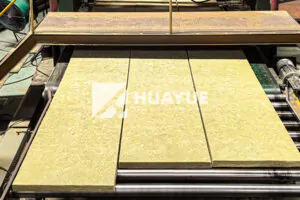Is Rockwool the Best Choice for Exterior Insulation?
Rockwool exterior insulation often grabs attention with its fire resistance, energy savings, and flexibility. But does it tick all the boxes for your next project?
Rockwool works well as exterior insulation thanks to its fire resistance, durability, and ability to keep moisture out. It meets high standards and fits many climates, making it a strong candidate for exterior wall applications.

If you are planning an exterior wall insulation upgrade, you might consider several options. Rockwool stands out because it is made from mineral fibers that resist fire and slow heat flow. I see more project managers choosing it when flame risk and moisture control matter most. That said, no material fits every situation. Keeping an open mind will help when considering long-term results and costs.
Can You Use ROCK WOOL for Exterior Insulation?
Rockwool insulation often attracts attention because of its fire rating and moisture resistance, solving many problems for builders. But can it work outdoors without issue?
You can use Rockwool for exterior insulation. It is Class A1 fire rated, repels water, handles temperature swings, and resists rot, so it is designed for outdoor settings.

Rockwool is well-suited to exterior insulation because it delivers safety, longevity, and flexibility. As a manufacturer, I make sure Rockwool meets ASTM standards, so project leaders worldwide rely on it. The fireproof mineral fibers do not burn. Moisture cannot get through, so they protect buildings from water damage. When installed on exterior walls, Rockwool keeps its shape and performance through harsh seasons. It can be used as batts, boards, rolls, or pipes, so it fits both commercial and residential exteriors.
| Feature | Rockwool Exterior Use | Other Insulation Types |
|---|---|---|
| Fire Resistance | Class A1 (non-combustible) | Varies |
| Water Repellency | Excellent | Moderate |
| Rot/Decay Resistance | High | Varies |
| Custom Sizes | Customizable | Sometimes |
| ASTM/CE Compliance | Yes | Varies |
I see contractors using Rockwool on facade cladding, curtain walls, metal buildings, and even tank insulation. Because it is flexible yet strong, it can be tailored to each project’s size and performance needs. Correct installation is essential—sealing joints and vapor barriers matter—so I always recommend working with trusted teams.
What Are the Negatives of ROCK WOOL Insulation?
Rockwool has many pluses, yet it brings some drawbacks that concern project managers. What are the challenges when using Rockwool for exterior insulation?
Rockwool is more expensive than some types and can be heavy. Its fibers may irritate skin or lungs, and it needs proper installation for max efficiency outdoors.
Whenever I work with Rockwool, its cost stands out first. Mineral fiber production is more resource-intensive than making foam or fiberglass. This means higher upfront cost for similar R-values. Rockwool insulation is also heavier than plastic-based panels, so logistics and labor can be higher. Handling it can cause skin itching or breathing discomfort; using protective gear is important on job sites.
The insulation must be installed well. If gaps appear or the vapor barrier fails, Rockwool loses efficiency. Outdoor conditions—rain, wind, freeze—can test installation quality. I advise training installers in mineral fiber methods, since poorly prepared walls may underperform. When cost is a worry, I suggest comparing lifecycle savings—Rockwool may last longer and save on maintenance.
| Negative Factor | Impact (Rockwool) | How to Mitigate |
|---|---|---|
| Material Cost | Higher upfront | Long-term savings |
| Weight | Heavy panels/batts | Plan for labor/logistics |
| Irritation Risk | Skin/lung discomfort | Wear PPE, mask, gloves |
| Installation Care | Needs precise sealing/barrier | Train for mineral fiber |
Despite these negatives, Rockwool remains popular for those who value fire safety and moisture control above all. Weighing the downsides, I find most clients willing to accept them for reliable performance.
What Is the Best Insulation for Exterior Walls?
Choosing exterior wall insulation gets complicated. Different climates, project budgets, and performance needs leave many options. What material should you select for lasting results?
Mineral fiber insulation, like Rockwool, often ranks highest for fire protection and longevity. Foam and fiberglass offer cheaper solutions, but rarely match Rockwool’s safety and durability.

Rockwool is often preferred by engineers handling strict safety regulations. Chemical plants, fire-prone factories, and tall buildings benefit from its non-combustibility. Custom sizes and packaging allow builders to fit it to every wall type. Its ASTM and CE certifications mean global acceptance, making procurement simple. Foam-based options—like XPS or EPS—cost less and are easier to move, but burn faster and can degrade in sunlight. Fiberglass works for simple jobs but absorbs water and loses R-value outside.
| Insulation Type | Fire Rating | Water Resistance | Durability | R-Value (per inch) | Typical Use |
|---|---|---|---|---|---|
| Rockwool | Class A1 | Excellent | Very Long | 3.7–4.2 | Commercial/Industrial |
| XPS Foam | Combustible | Fair | Medium | 5.0 | Homes, Cold regions |
| Fiberglass | Moderate | Poor | Medium | 3.1–4.0 | Homes, Ceilings |
I always consider total cost, safety needs, and local codes. Foam and fiberglass cannot replace mineral fiber insulation when fire or moisture risk is severe. That is why HUAYUE’s Rockwool remains popular for demanding projects. I offer custom packaging and bulk supply to meet every construction schedule.
Can ROCK WOOL Be Used Outside?
Many construction teams ask if Rockwool survives harsh outdoor conditions, such as rain, freeze, and high sun. Can it really last when exposed?
Rockwool works outdoors when protected by cladding or weatherproof finishes. It withstands moisture, temperature shifts, and does not rot, making it safe for outside use.
When installing Rockwool on exterior walls, I recommend covering it with siding, brick, or metal panels. In chemical plants and tank environments, Rockwool does not absorb water, so it resists corrosion under insulation (CUI). Its mineral fiber structure holds up against wind, rain, and freeze-thaw cycles. With correct installation, it maintains its insulation and fireproof qualities outside. I have seen Rockwool perform well for decades when shielded from direct rain.
| Application Method | Protection Needed | Longevity | Typical Result |
|---|---|---|---|
| Behind Siding/Facade | Weather barrier | 20+ years | High insulation, safe |
| Tank Cladding | Metal jacket | 15+ years | No corrosion, dry |
| Exposed Install | Waterproof finish | Varies | Can degrade |
Customization is key. I provide Rockwool in rolls, boards, and pipes for different outdoor uses. Custom trimming and special packaging meet local demands. Before installation, I check site conditions and talk to project leaders to set specs right.
Conclusion
Rockwool solves many outdoor insulation challenges. Its fire rating, moisture resistance, and custom options make it a top choice for safe, long-lasting exterior wall solutions.
You may also be interested in:
Ready to Get Started?
Get in touch with our experts for personalized solutions tailored to your needs.
Get Free QuoteLatest Articles

Glass Wool Fire Rating: How Safe Is Your Insulation?
Dec 25, 2025
Let's Work Together
Ready to take your business to the next level? Get in touch with our team of experts and let's discuss how we can help you achieve your goals.
Get Free Solutions






